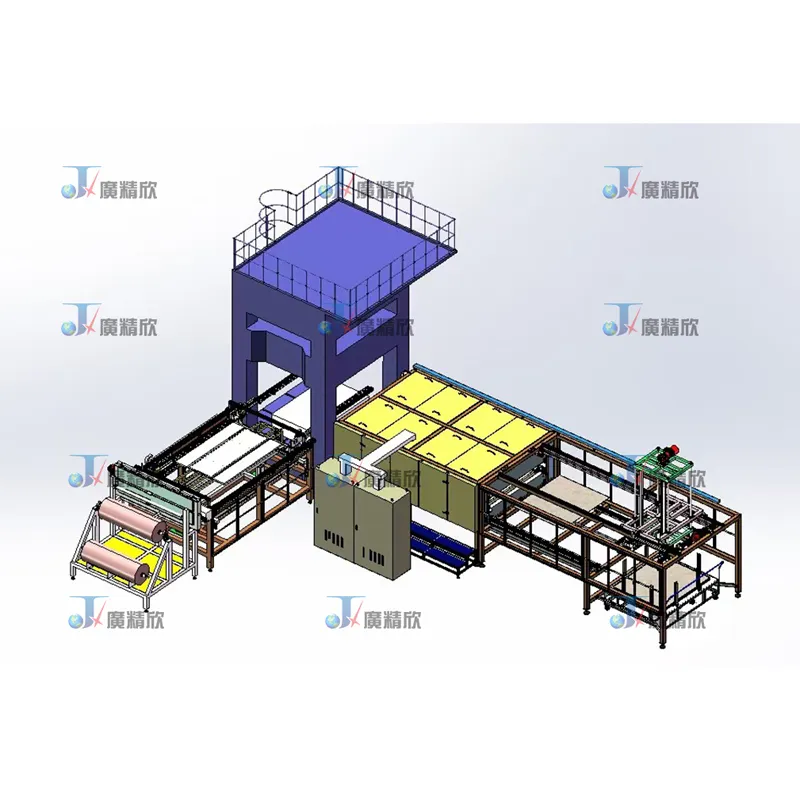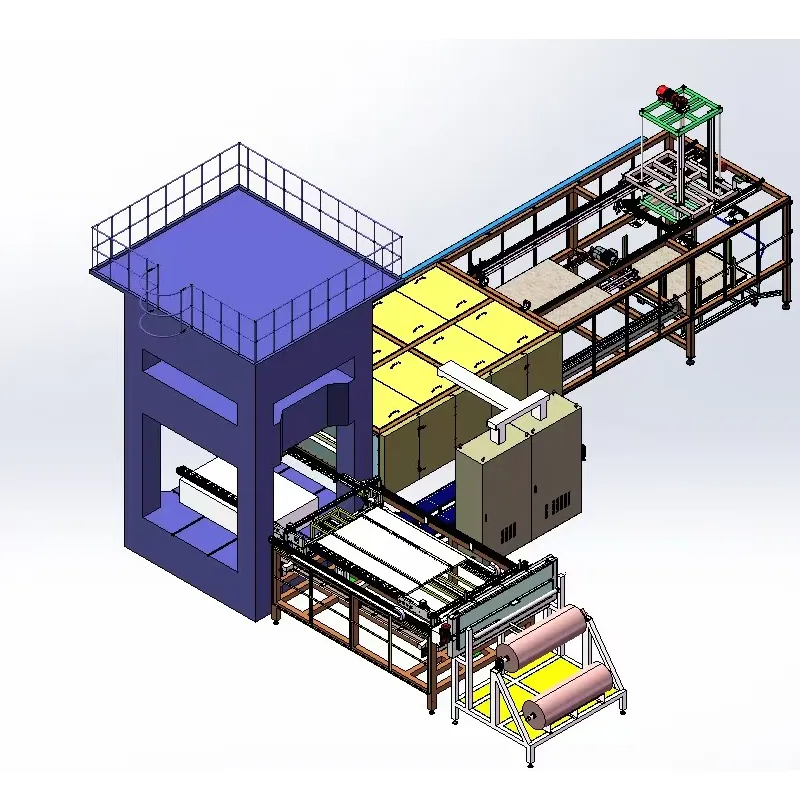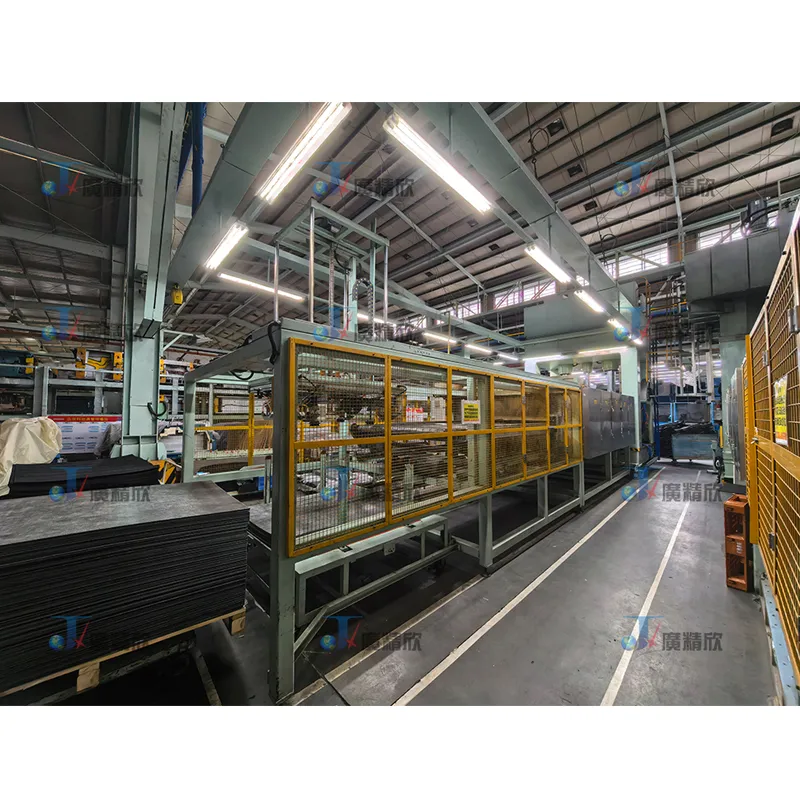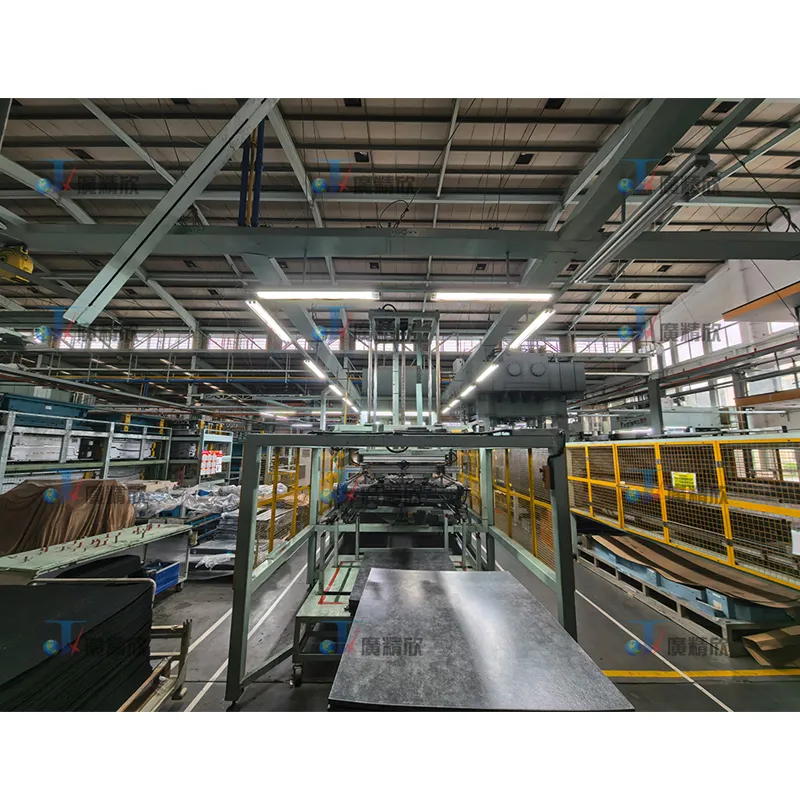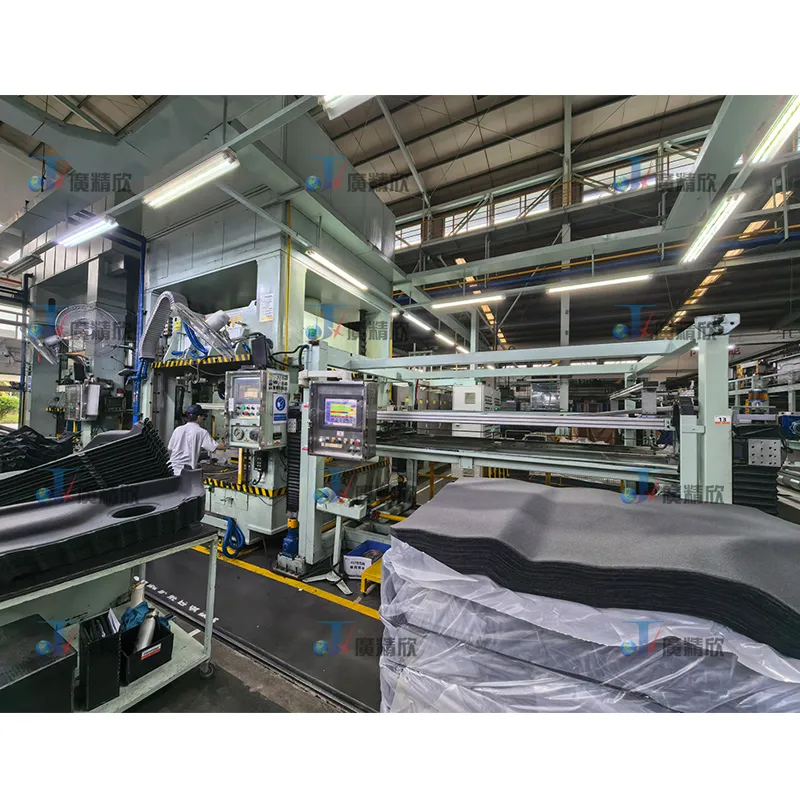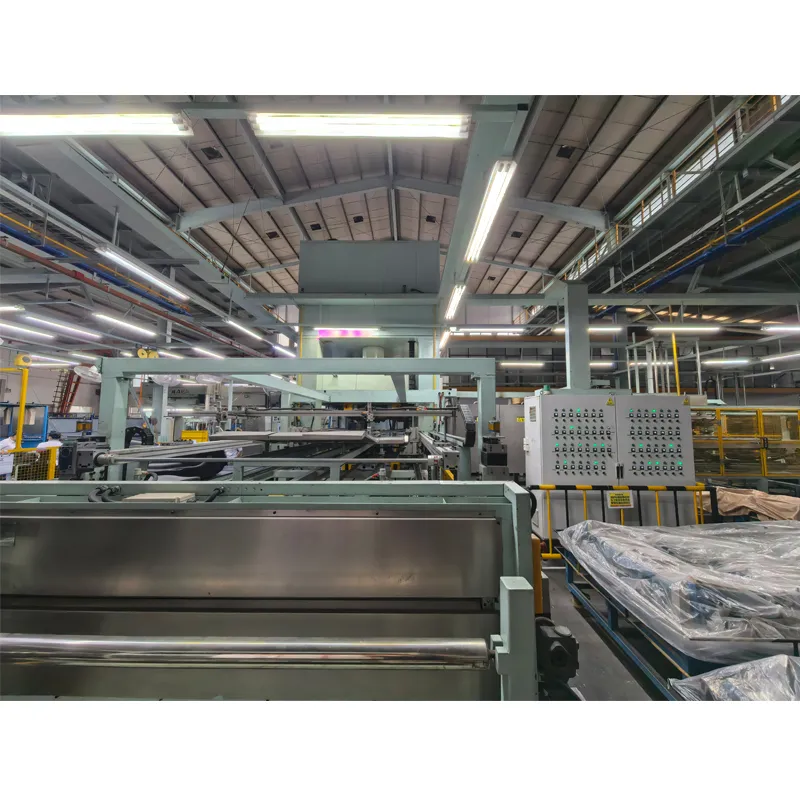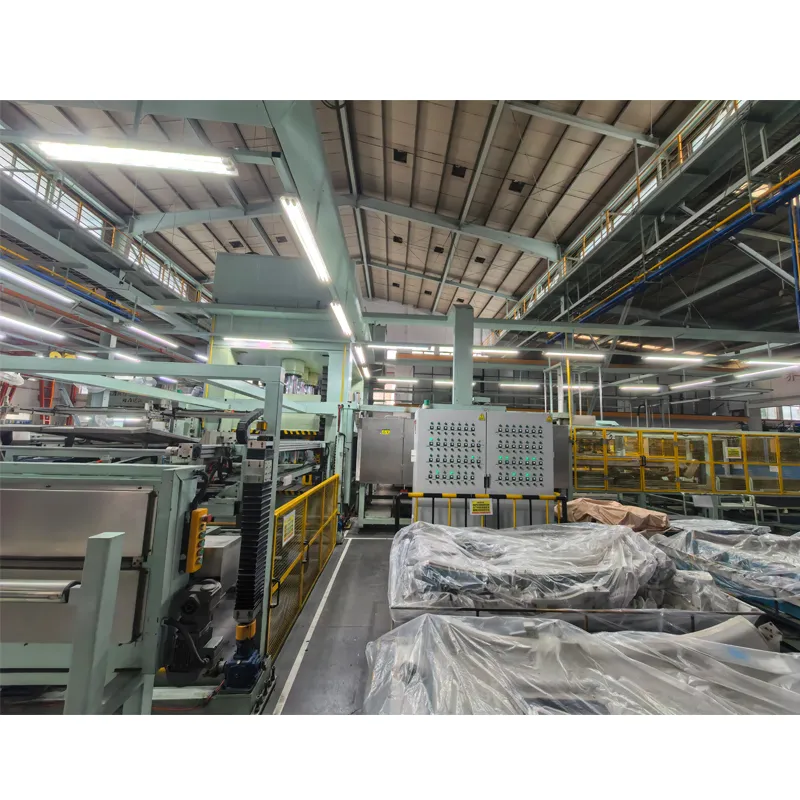System Overview
The production line consists of several key subsystems working in harmony to transform raw materials into finished heat shields. These include:
Automatic Feeding Mechanism
The process begins with the automated feeding system, which employs a needle gripper mechanism to securely pick and place materials. This method ensures a firm grip on different material types, including fibrous and composite insulation materials, without causing deformation. The vertical lifting motion is driven by a servo motor paired with a planetary gear reducer, ensuring smooth acceleration and deceleration for precise positioning. This setup minimizes vibration and mechanical stress, contributing to long-term system durability.
Conveying System
The belt-driven conveying system transports materials between different production stages with high efficiency and minimal noise. The horizontal movement is powered by a frequency converter-controlled synchronous belt drive, which provides smooth, jerk-free motion. The use of precision-engineered belts eliminates slippage and ensures accurate alignment of materials as they move through the heating and forming stages. The system is designed for low maintenance and high durability, even in continuous operation environments.
Advanced Heating System
A critical phase in heat shield production is the thermal conditioning of materials to ensure proper forming and structural integrity. This production line utilizes a multi-zone ceramic heating system, where heating elements are strategically arranged to deliver uniform temperature distribution across the entire material surface.
Ceramic heating tiles provide rapid and consistent heat transfer, reducing energy consumption compared to traditional resistance heating.
Multi-zone temperature control allows for precise adjustments in different sections of the material, accommodating varying thicknesses and material compositions.
Closed-loop temperature monitoring ensures stability, preventing overheating or cold spots that could compromise product quality.
This advanced heating approach ensures that the material reaches optimal pliability before entering the forming stage, reducing defects and improving yield rates.
Forming & Molding Process
Once the material is uniformly heated, it is transferred into the precision forming mold. The mold is constructed from high-grade tool steel or composite materials to withstand prolonged thermal and mechanical stress. Key features include:
High-precision cavity design, ensuring dimensional accuracy and repeatability.
Hydraulic or servo-driven clamping, providing consistent pressure for defect-free forming.
Quick-change mold compatibility, allowing for rapid transitions between different product designs.
The forming process is carefully controlled to avoid material stretching or tearing, ensuring that each heat shield meets strict automotive industry standards.
Material Handling & Unloading
After forming, the finished heat shields are conveyed out of the mold using a stainless steel mesh belt system. This design prevents material sticking and allows for gentle handling of delicate parts. The unloading mechanism is driven by a variable frequency drive (VFD) and synchronous belt, ensuring smooth and quiet operation.
For added flexibility, the system incorporates adjustable grippers and positioning guides, enabling compatibility with multiple product sizes and shapes without extensive reconfiguration.
Key Advantages of the Production Line
High Efficiency & Speed
With a cycle time of just 60 seconds per piece, this production line is optimized for high-volume manufacturing, making it ideal for automotive suppliers with demanding production schedules. The seamless integration of automated feeding, heating, and forming minimizes idle time, maximizing throughput.
Precision & Process Stability
The combination of servo-driven movements, synchronized belt drives, and closed-loop temperature control ensures consistent product quality. The elimination of mechanical backlash and thermal variation reduces scrap rates and enhances long-term reliability.
Energy-Efficient Heating
The ceramic heating system provides rapid and uniform heat distribution, significantly reducing energy consumption compared to conventional heating methods. The multi-zone control further optimizes thermal efficiency, lowering operational costs.
Flexibility for Multi-Product Manufacturing
The production line is designed to accommodate various heat shield sizes and material types with minimal adjustments. Quick-change tooling and programmable settings allow for fast transitions between different product batches, making it ideal for just-in-time (JIT) manufacturing environments.
Low Noise & Operator-Friendly Design
The use of synchronous belts, servo controls, and vibration-dampened mechanisms ensures quiet operation, improving workplace ergonomics. Additionally, the automated handling systems reduce manual labor, enhancing worker safety and productivity.
Industry Applications & Future-Readiness
This Heat Shield Production Line is particularly suited for automotive OEMs and Tier-1 suppliers specializing in thermal management components. Its ability to produce high-precision insulation pads at high speeds makes it invaluable for electric vehicles (EVs), where thermal protection is critical for battery systems and power electronics.




